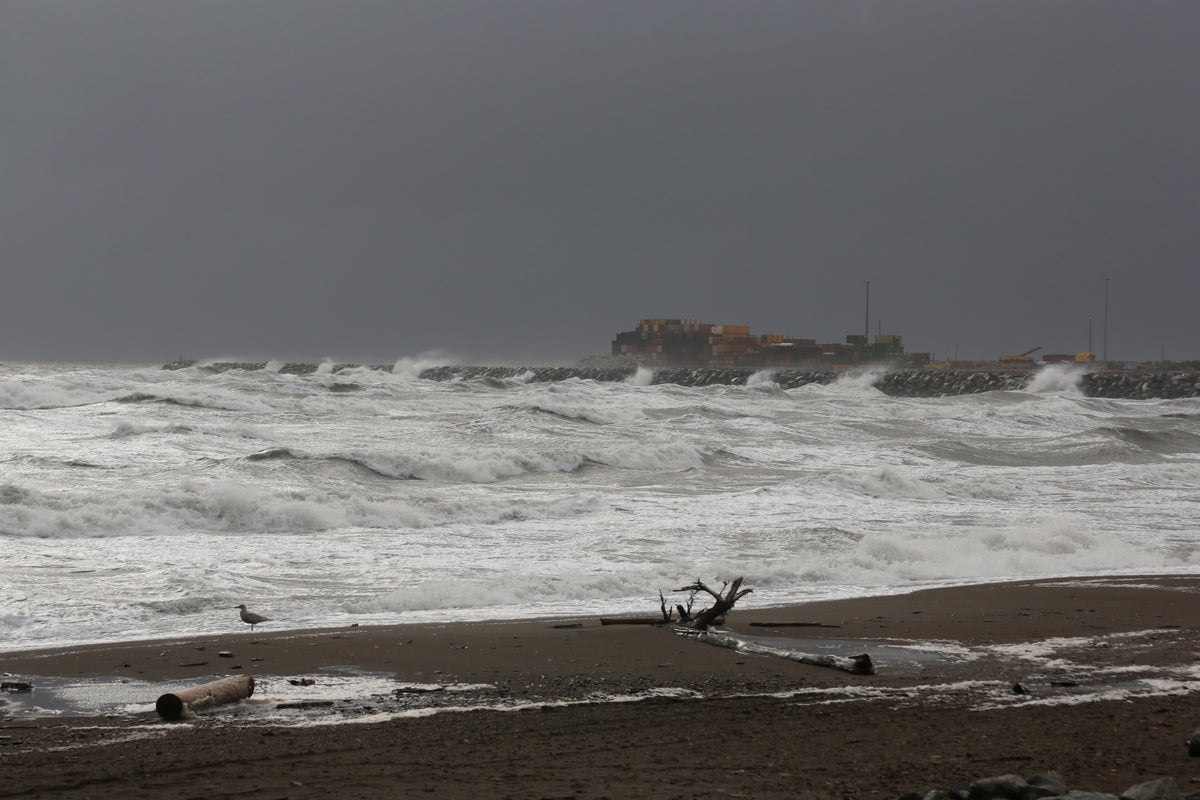
Much of the Arctic is in a burst of freak December warming.
In Utqiagvik, Alaska’s northernmost community formerly known as Barrow, it hit 40 degrees (4.4 degrees Celsius) Monday morning. That’s not only a record by six degrees (3.3 degrees Celsius) but it’s the warmest that region has seen on record from late October to late April, according to Rick Thoman, a climate specialist at the International Arctic Research Center at the University of Alaska Fairbanks.
It rained over the weekend in Nome, Alaska, which is unusual but not unheard of for December and the town also had record-breaking warmth Sunday. Savoonga Creek was flooding and didn’t have snow cover, nor did the town of Teller northwest of Nome, where snow this time of year is used for drinking water, Thoman said.
On Sunday, the Arctic as a whole averaged 11.5 degrees (6.4 degrees Celsius) warmer than the 1979-2000 average temperature and on Monday, computer models showed that average to likely be 10.5 degrees (5.9 degrees Celsius) warmer than normal, according to the University of Maine’s Climate Reanalyzer.
In Nuuk, Greenland, on Friday it was shirt-sleeve weather in December, when the temperature peaked at 54 degrees (12.2 degrees Celsius), 26 degrees (14.4 degrees Celsius) above the normal high mark. In Kangerlussuaq, Greenland, on Friday it hit 48 degrees (8.9 degrees Celsius), which was 34 degrees (18.9 degrees Celsius) warmer than normal.
“The entire Arctic is hot except for small portions of the central and eastern Canadian Arctic and a very small portion of Siberia,” Thoman said from a warmer than normal Fairbanks.
Part of it is because of a system of storms, which is likely just random weather, but part is it from lower than normal sea ice, which is human-caused climate change, Thoman said.
Sea ice in the Arctic is about sixth lowest on record, according to the National Snow and Ice Data Center. It’s far below normal “but we’ve seen worse,” Thoman said.
Sea ice matters because in areas of the Arctic there’s no sun in the winter and the atmosphere is cold. But if there’s open water, that’s usually warmer than the atmosphere.
“Think of that as a heating pad and it’s just emitting heat into the atmosphere,” Thoman said.
Because of that reduced sea ice, much of the Arctic is now warming four times faster than the rest of the globe, which leads to an increase in “winter warm events,” said Danish Meteorological Service ice scientist Jason Box, who studies Greenland.
“Some people cry ‘come off it, it’s just weather’,” Box said. “However, record-setting weather like we’re seeing plenty of examples of in recent years does tell a real story of climate heating.”
___
Follow AP’s climate and environment coverage at https://apnews.com/hub/climate-and-environment
___
Follow Seth Borenstein on Twitter at @borenbears







